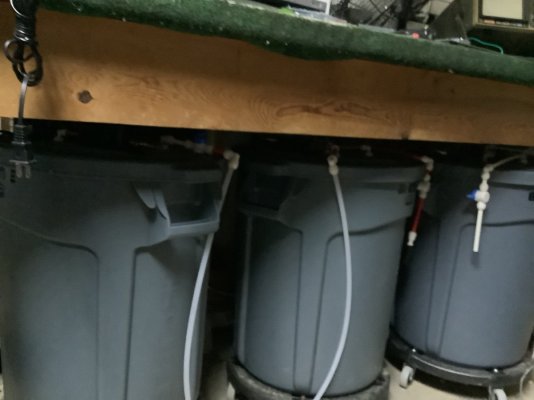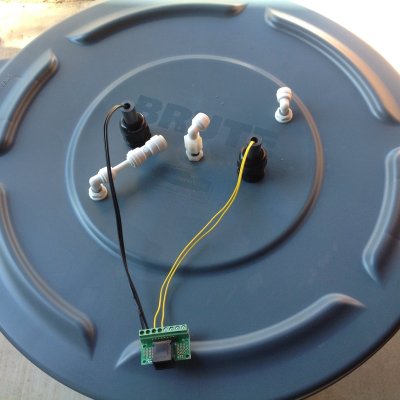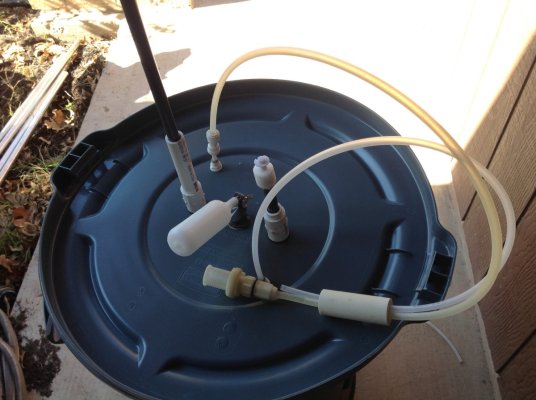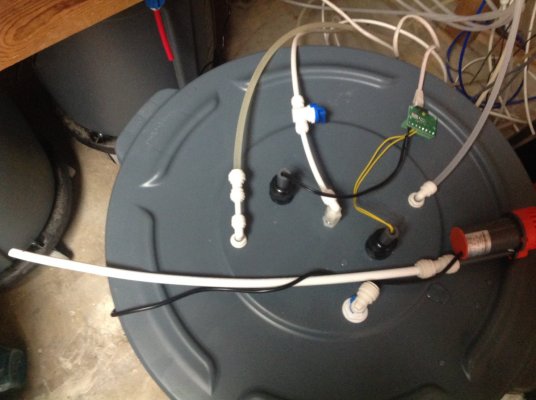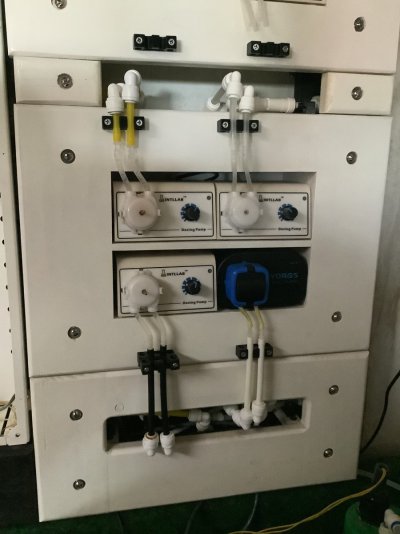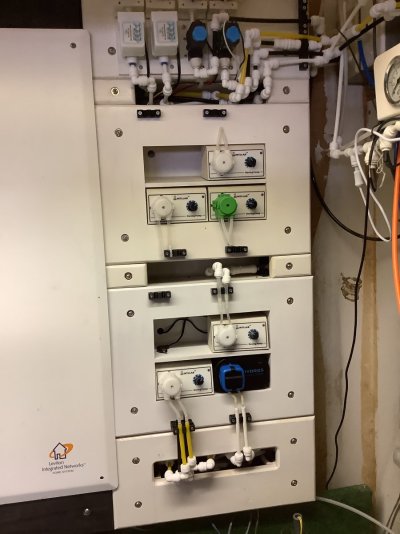Hi,
I am building a mixing station for my fluval 13.5 gallon. I have purchased a Kamoer XS2R AWC and setting up a mixing station in the basement next to (partially over) my sump pit. Lines have been run upstairs to my tank. Now i just need to plumb the mixing station. Below is the plumbing I am thinking about. Looking for some feedback
These were my goals.
I was planning on using 3/4" PVC pipes and Cepex Union Ball heads.
First time at this, so any feedback is welcome,
Thanks in advance...
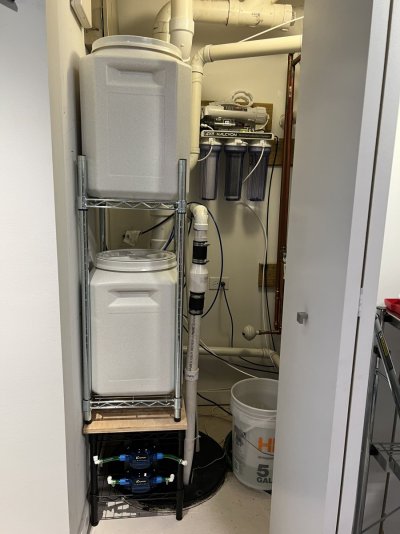
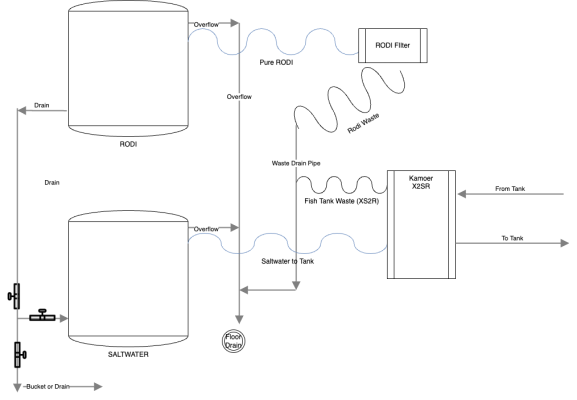
I am building a mixing station for my fluval 13.5 gallon. I have purchased a Kamoer XS2R AWC and setting up a mixing station in the basement next to (partially over) my sump pit. Lines have been run upstairs to my tank. Now i just need to plumb the mixing station. Below is the plumbing I am thinking about. Looking for some feedback
These were my goals.
- Use the X2SR to pump water to and from the SW containers
- Mixing station to just run on gravity
- Drain into the floor drain or sump pit next to mixing containers
- Have both containers with a safety overflow line
- Move water from RODI container to SW mixing container using gravity
- Ability to fully drain both containers independently at any time
- Ability to fully flush the whole system quickly for sump maintenance
I was planning on using 3/4" PVC pipes and Cepex Union Ball heads.
First time at this, so any feedback is welcome,
Thanks in advance...







